I’m sharing on Himalayan Salt versus Sea Salt because I was left a comment asking the question: ” I am also interested in removing bad salt from my diet. I heard that pink Himalayan salt is the best. Do you know why?”
As I’m keen for my readers to take some simple steps to a healthier life I’m going to discuss Himalayan Salt health benefits and the difference between Himalayan Salt vs Sea Salt. I mean, how easy can it get to change the type of salt you eat! It still tastes like salt, so why not? OK, which salt is healthiest?
Everyone talks about the fact that we need to cut down on our use of salt. It’s everywhere. We get it from doctors and health professionals of all sorts, so we should take notice of them… right? Hmm…
What salt do they study?
Well the problem is the use of a general term “salt”. This refers to Sodium Chloride which is the common table salt, which is a mixture of sodium and chloride. This is a chemical salt and although it’s definitely salty, it’s not really related to natural salt.
No matter how far back in history you go, salt has always been an integral part of it. For thousands of years, people have understood the value of salt in their diets… right up until this modern age when suddenly “we know different!” We are the enlightened age, aren’t we? We know so much more than all the civilizations who came before us. Oh, if only that were true!
Which salt is healthiest?
Let’s look at just 3 of them:
– Table Salt 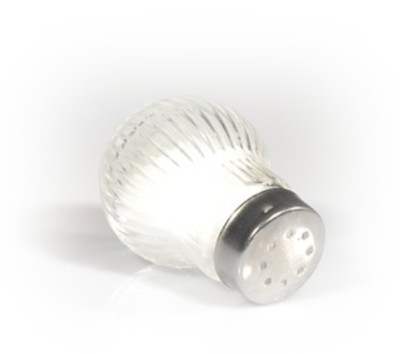
What exactly is in that stuff?
Although table salt starts off as a healthy rock or sea salt, it finishes up as something quite different. The problem is that they chemically clean the salt using caustic soda which strips it of all its minerals, then it’s dried at about 650 degrees Celsius (1,200 degrees F) which in turn alters the chemical structure.
This kind of table salt (the one that virtually everyone uses) is made up of 97.5% sodium chloride with the remaining percentage made up of other chemicals designed to absorb moisture, or make it easier to pour. They also tend to throw in a little iodide (not iodine as you suppose).
One of the chemicals added to table salt is aluminum hydroxide which over time builds up in your brain. Aluminum is a potential cause of Alzheimer’s disease.
My mum had dementia, and I know how devastating it can be. So for many years now I’ve been trying to avoid aluminum of all sorts, including the use of aluminum foil or drinking from an aluminum can. I will not cook with aluminum, either the cooking utensils or aluminum foil. There has been the odd time I’ve used the foil, but I always completely cover the food with kitchen paper first. I regard it as really dangerous stuff.
Then to add insult to injury you find out there’s aluminum in the salt! The reason it’s there is to help the salt to pour without clogging up. Oh yes, we all like the way salt so easily shakes over our meal… but at what cost?
Beware of processed foods
The problem here is that table salt (also known as cooking salt) is in everything processed, so unless you’re prepared to avoid all processed foods you will not be able to avoid this chemically changed and deranged type of salt. Don’t you find it annoying they take a natural substance which is extremely good for our bodies, and through processing completely destroy it. Bra burning stuff!
Why do they do it?
It’s actually not because they’re trying to be nasty to us, but rather because they are preparing most of the salt (over 90%) for commercial purposes. It’s uses are many from road salt, fabric dying, curing of concrete, rubber manufacture, fire fighting as a extinguishing agent in fire extinguishers… the list goes on and on. As you can imagine they need tons and tons of salt for these purposes.
So where do we come into this? Well, they just portion off some and say that’s for the food industry and consumers. We just get the left-over part, as I guess they figure it’s easier to do it this way. I’m thinking they wouldn’t have done studies as to whether it’s doing “us” good or not, although there are plenty of studies around now confirming the harm it’s doing. The only problem is they include “all salt” into the mix and that’s where they get it wrong. Unfortunately. 🙁
Table Salt is dead!
When viewed under a very strong microscope this particular type of salt is dead. You can’t receive any health benefits because there are none. Eating too much of this salt potentially brings about an increased risk of high blood pressure which is the main cause of strokes and definitely big on heart attacks.
But virtually every study done regarding salt, is on this stripped and flogged table salt. This is why everyone is crying out to cut down, or cut out our use of salt. Trouble is it’s like they are throwing the baby out with the bathwater! Let’s not get so carried away and throw all salt out of our diets… because this potentially causes many a problem. Did you know that a low sodium diet can cause up to 4 times as many heart attacks? Whoa… what’s going on here?
Did they know better than us?
Did you also know that 2000 years ago salt was being used to treat skin conditions… digestive problems were treated with drinking salty water, and respiratory problems treated with inhaled salt? How come these people already knew all this and yet here in our modern day we’re being told, cut down or cut out! It’s like salt has become the enemy!
So let’s get back to basics and ask… “So what was different about the salt they used back then?”
They used salt in its natural form. I guess they went down to the sea shore and gathered some water, took it home and allowed the water to evaporate. The salt that was left is what they most probably used. Simple stuff. Or maybe they managed to dig some out of the side of a mountain.
This is where our two main untarnished salts come from, so let’s look at both of them.
Himalayan Salt vs Sea Salt
– Sea Salt (unrefined)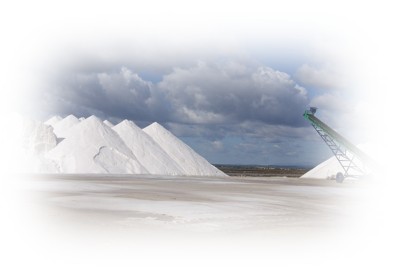
Where does it come from?
As can be expected, sea salt comes from the sea, or from lakes, and is produced through evaporation. Sea salt can go through varying amounts of processing with the end result being a salt that still contains all its minerals, or a salt totally devoid of minerals such as common table salt.
What do they do with the minerals?
Do you know they sell off the minerals they strip from the salt to the supplement industry? Think on that! Proves they know it’s the good part of the salt, doesn’t it?
One good sea salt I’m aware of is Celtic Salt. This one still contains all its natural minerals (over 80+) and is unrefined. It’s a light grey, moist salt getting its colour from the grey clay lining the salt beds. It’s not been bleached and certainly contains no added chemicals or anti-caking agents.
There is a little concern for the condition of our oceans, as to whether sea salt is still as good an option as it used to be a hundred years ago or so. What with all the oil spills and the dumping of mercury and heavens only knows what else, wouldn’t some of that find its way into the sea salt? According to the official website for Celtic Salt they still believe their product is totally pure. Sounds good to me if that is so.
But what about other sea salts… should we be worried?
When viewed under a microscope it forms little crystals. This means it’s a living salt but doesn’t show up as well as…
– Himalayan Salt (unrefined)
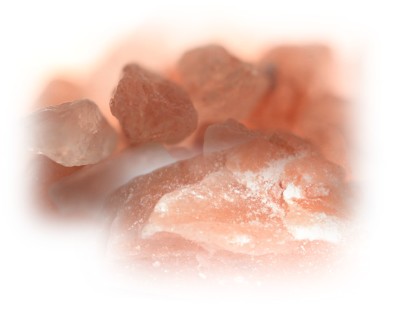
When viewed under a microscope this salt forms beautiful crystals and shows to be living and full of energy.
It comes in pretty colours ranging from white to pink to red. I find the colour draws me to it, but that’s the least of it.
Himalayan Salt (often referred to as Himalayan Crystal Salt) is mined and washed by hand. They don’t use any pollutants of any kind. It’s been forming deep under the Himalayan Mountains for more years than you can imagine.
84 Trace Elements
This salt contains 84 trace elements, all of which our body needs. Can’t you just imagine shaking this lovely pink salt on to your food and thinking how you’re receiving the benefit of 84 trace elements? Makes you want to give it another shake, doesn’t it? And you can… it’s only doing you good.
Unlike table salt which needs 23 times its amount of cell water to neutralize it, Himalayan Salt doesn’t dramatically affect the water in your cells in the same way. This means it actually reduces fluid retention, so no more swollen feet.
It helps to prevent osteoporosis. This is big with me because my mum was bent over with that dreaded disease. Horrible.
There are many other pluses from consuming the type of salt we were designed to eat, from improving the nervous system function to kidney problems or heart disease.
Does this mean we can eat as much salt as we like? Let me warn you. I believe you can overdo anything!
Did you know that you can die from drinking too much water? It’s true.
Too much of anything that’s “good for us” becomes “bad for us” if we consume it to excess.
But don’t be afraid to have salt in your diet… it will only do you good and is a very necessary requirement for your body. Just be sensible as you would be with anything else.
The Truth about Salts and the Chemical Industry
Himalayan Salt versus Sea Salt
Both these salts are good for our bodies just as long as they don’t have the life processed out of them. It’s the type of salt our bodies are craving for.
This is one of those simple steps to a healthier life you can make which doesn’t affect even the taste.
Just go down to your local supermarket or health shop and buy some beneficial salt, or if you prefer to buy online: Himalayan Crystal Salt or Celtic Salt
I hope you can see in this article on which salt is healthiest and the discussion between Himalayan Salt versus Sea Salt, that Himalayan Salt is streets ahead to most sea salts which undergo various degrees of processing. The Himalayan Salt health benefits are so numerous that to my way of thinking, it’s the most superior salt on the face of the earth, with Celtic Salt coming in as a good second.
![]()

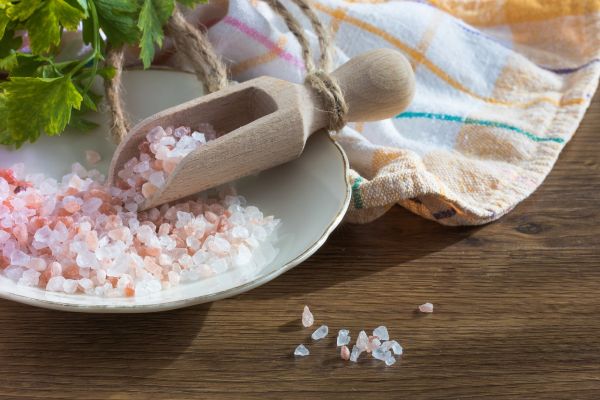
 Marilyn Williams
Marilyn Williams
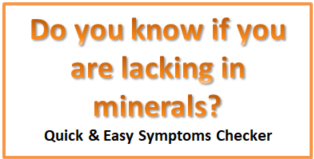
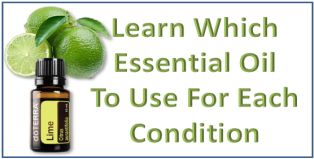

WOW. this post opened my eyes to a lot of thing involving salt. I’m definitely going to look more into Himalayan salt. Thanks for the info.
Marcus
That’s great Marcus… one by one the news gets out there. We all definitely need to be more aware of what we are actually eating!
I had no idea about this! Wow, thanks! Appreciate your blog
Thank you Mal!
Is it easy to find this himalayan salt in our shops?
Yes Adam, any half decent store should stock it. If not, I’d say you would definitely find it in any health store.
Marilyn
Hi, Thank you for the information. I remember see a couple of movie that had people rushing towards the salt when they had been deprived ignoring all other teasures around them. Isn’t there something called a salt lamp. I wonder if that is healthful at all? So much of what really benefits us comes from the ocean.
Yes there definitely are such things as salt lamps and they do have benefits. I’ll post on it soon and let you know. I can imagine all those people running towards the salt as it’s such a necessary element within our bodies. Thanks for commenting.
I didn’t realise that this type of unrefined salt had nutritional benefits. Now I’m wondering whether I should get some Himalayan salt. I’m just wondering whether it is worth the extra cost. Does it taste better too?
We need the minerals Marcus quite apart from anything else it might do. To me, no matter what the cost, it’s worth it. Regular salt does bad things… Himalayan salt does good. It’s a bit of a no-brainer to me. Some cooks/chefs say they can taste the difference (in a good way) but to me salt is salt when it comes to taste. When you buy some and if you taste a difference, don’t forget to let us know… I’d be really interested in that.
Thanks for that investigation. I was wondering about Sea Salt as well so I’m glad it was included. Himalayan Salt is so easy to find in the stores nowadays, as well.
You didn’t mention that the iodine was taken out of regular salt. I’m not sure why but I bet it wasn’t done with our best interests in mind.
Thanks again.
From what I understand it was decided that the amount of iodine in iodized salt was insufficient to meet our demand for the nutrient. The problem is that the amount of iodine in the salt depletes the longer it is stored… especially in humid conditions.
But that’s only the half of the story! They were putting iodine into salt that has been stripped of all its nutrients and then bleached to boot! Usually other chemicals is added to it. You must eat only natural salt such as Himalayan Salt and proper Sea Salt.
I have only ever used the normal salt . is it called table salt? Yeah… never knew the stuff you’ve mentioned here. I need to be more mindful of what i eat. can you buy himalayan salt in the shop?
Sure you can Tasha… in any of the good supermarkets you should find himalayan salt. You’ll love using it – it’s such a pretty colour. Try to cut table salt out of your diet all together because it does not do you any good. Thanks for leaving your thoughts. Let me know how you go.
This is such a great post! I have been contemplating if I should switch to Himalayan crystal salt. It just so happens I stumbled upon this post on the day we ran out of our normal salt… so I think I know which one I will be buying at the grocery store tomorrow!
Wow, how cool is that! That’s great timing isn’t it!! You won’t go wrong in switching salts and I’ll soon be telling you another cool way to receive it’s benefits. Don’t go way now 🙂
hi there
wow what a great and complete article on salt! I never knew half the facts you discuss here. I am a fan of kosher salt, which is what I use on a daily basis. But now himalayan salt is looking better and better. And the color! It is just gorgeous! Amazing the differences between all types of salt in terms of how healthy or unhealthy they are
Thanks Emily for your comments. As you know I didn’t discuss kosher salt but it could have been added into the mix! Yes I just adore the colour of it, just like I adore the lamps that are made out of it.
Wonderful to see it explained so well. it really helped me. I now use pink salt on a regular basis.
Good to hear… thanks for sharing
Very informative site. I will surely recommend this site to my friends. Keep us informed on any updates!
Thank you – that is my hope – to inform people about the little changes they can make that can bring about enormous health benefits.